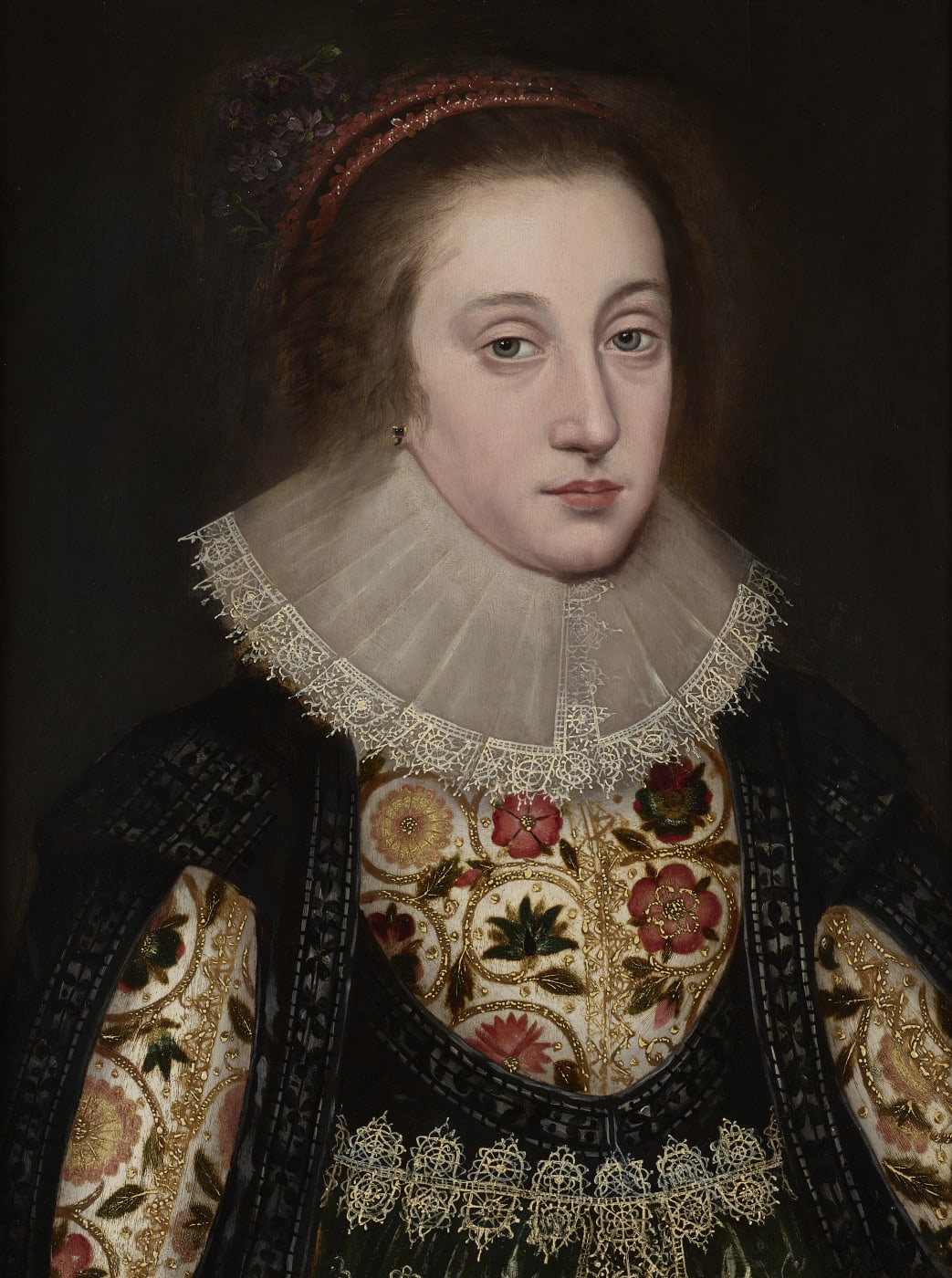What is so immediately striking about the present work is the ornate costume of the sitter; the evident focus on and detail in the dress aid in our understanding of the subject. Clearly a young woman from an affluent family, this ornate dress boasts of the lady's significant wealth and status. The 1620s saw a significant change to both men and women's fashion in Britain, largely due to the rising cultural influence of France. Waistlines for clothing of both sexes rose higher, with padding in both doublets and bodices removed; dresses now exposed women's forearms and men's breeches became slimmer and more practical. Indeed, by the latter half of the century, with the help of the influence of Louis XIV, France would become the trailblazer of European fashion.
The subject of the present work wears a black gown over an intricately embroidered jacket of floral motifs. The employment of black pronounces the sitter's wealth as it was an extremely expensive dye at this period, and its abundance in the subject's clothing furthers this visual message. The bodice worn by the sitter is decorated with floral motifs, including depictions of carnations, pansies, cornflowers and other flowers. Between these are scattered shimmering sequins, known as 'oes', and the neckline is similarly ornately decorated with the latest contemporary fashion; an iteration of the ruff, which had become prominent in dresswear of the sixteenth century. This more 'relaxed' ruff was another influence from France, which indicated that fashion was moving in the direction of comfort and away from stiffness and impracticality.





